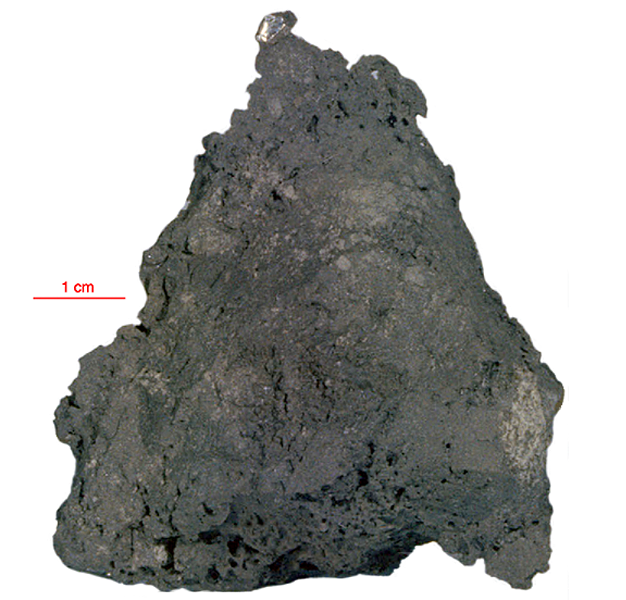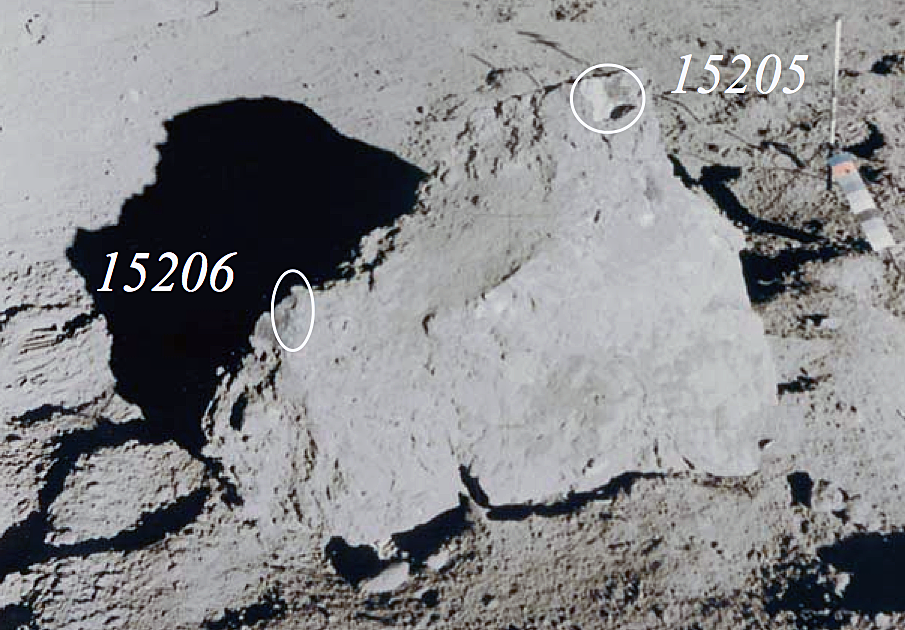
Fact sheet
15206 was broken off the same boulder as 15205 and apparently has the same chemical composition. However, it has a different texture.
It is a vesicular glassy breccia containing KREEP basalt and mare basalt clasts (see rotations). Unlike 15205 the clasts are shocked and penetrated by glass and there is a higher proportion of dark matrix. It is an impact melt rock, that was probably generated from a regolith.
The sample weighed 92 grams before analysis. It has not been dated.
Further details of this and other Apollo samples are here: http://curator.jsc.nasa.gov/lunar/
The Apollo 15 landing site was in the Apennine Highlands, and close to Hadley Rille — a long, narrow winding valley. Approximately 76 kg of lunar material, including soil, rock, core-tube and deep-core samples, were returned to Earth.
This mission was the first flight of the Lunar Roving Vehicle which allowed the astronauts to venture further from the Lunar Module than in previous missions. During three periods of extravehicular activity, or EVA, on July 31st, and August 1st and 2nd, Scott and Irwin completed a record 18 hours, 37 minutes of exploration, travelling 17.5 miles, in the first car that humans had ever driven on the Moon.
Apollo 15 was launched on 26 July 1971.







